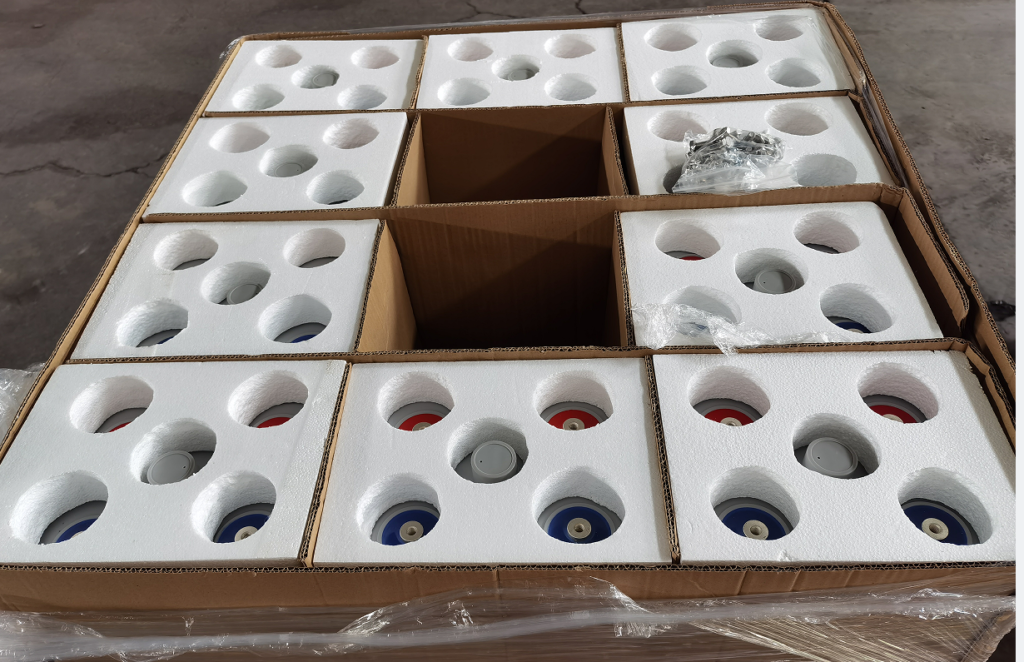OPzV batteries, also known as Valve Regulated Lead-Acid (VRLA) batteries with tubular gel technology, are designed for deep cycle and long-duration applications. They are known for their high reliability and long service life. The production process for OPzV batteries involves several key steps, from material preparation to final assembly and quality control.
1. Material Preparation
- Lead Alloy Preparation: Similar to AGM batteries, high-purity lead is alloyed with calcium, tin, or antimony to enhance performance. This alloy is then used to create grids and tubular plates.
- Lead Oxide Production: Lead ingots are oxidized to produce lead oxide, which will be used in the active material for the electrodes.
- Electrolyte Preparation: Sulfuric acid is mixed with a gelling agent (usually silica) to form the gel electrolyte.
2. Electrode Manufacturing
- Grid Casting and Tubular Plate Production: The lead alloy is cast into grids for the positive and negative electrodes. For the positive plates, tubular grids are used. These grids are filled with lead oxide paste to form the active material.
- Pasting: Lead oxide paste is applied to the negative grids. For positive plates, the lead oxide is packed into the tubular structure, often called gauntlets.
- Curing and Drying: Both pasted and tubular plates are cured and dried to ensure the paste sets properly and achieves the desired chemical properties.
3. Separator Production
- Microporous Separator Manufacturing: Special microporous separators are produced, which will be placed between the positive and negative plates to prevent short-circuits while allowing ionic flow.
4. Cell Assembly
- Plate Stacking: Positive tubular plates and negative pasted plates are stacked alternately with separators in between to form the individual cells.
- Cell Insertion: The assembled cell stacks are inserted into individual battery containers.
- Intercell Connections: Cells are connected either in series or parallel, depending on the desired voltage and capacity of the battery.
5. Electrolyte Filling and Sealing
- Gel Electrolyte Filling: The gel electrolyte is added to the cells. The electrolyte penetrates the separators and plates, immobilizing within the battery.
- Sealing: The cells are sealed, and pressure relief valves are installed to allow for gas escape and maintain internal pressure.
6. Formation and Testing
- Formation Charge: An initial charging process converts the lead oxide in the positive plates to lead dioxide and the lead oxide in the negative plates to sponge lead. This also helps to form the active material structure.
- Performance Testing: Each battery undergoes a series of tests to ensure it meets capacity, voltage, and other performance criteria.
7. Final Inspection and Packaging
- Quality Control: Comprehensive inspections are conducted, including visual checks, electrical tests, and leak tests to ensure each battery meets stringent quality standards.
- Labeling and Packaging: Batteries are labeled with relevant information, including specifications and safety warnings, and then packaged for shipment.
8. Recycling and Environmental Considerations
- Recycling: Lead-acid batteries, including OPzV types, are highly recyclable. Used batteries are processed to reclaim lead, plastic, and acid, which can be reused in the production of new batteries.
- Environmental Compliance: Manufacturers must comply with environmental regulations to manage hazardous materials responsibly and minimize the environmental impact of production processes.
Each of these steps is critical to ensuring the high reliability, performance, and longevity that OPzV batteries are known for, making them suitable for applications such as renewable energy storage, telecommunications, and backup power systems.


